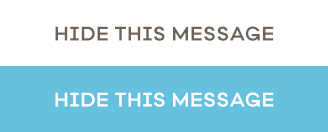(1).png)
An evocative exhibition at The Workhouse and Infirmary is bringing mental health to the forefront of our daily lives by telling startling stories of inmates and encouraging creative ways to express care and wellbeing. The art is displayed on the top floor of the Workhouse main building, so make sure to stop by and explore on your next visit.
You are also encouraged to enjoy a guided mindful walk around the Workhouse kitchen garden, which is a relaxing space full of growing vegetables and summer colour. It was created by Soft Estate company and is accessed by scanning a digital QR code on a personal device.
The Workhouse is open Wednesday to Sunday and the asylum exhibition is ongoing until October. You can find the latest seasonal events at The Workhouse here, and don’t forget to read our recent review to find out what you can expect on your visit.
.png)
More about the exhibition
A combination of artwork and digital media has been designed by artists and volunteers with a passion for bringing social change and understanding to the heart of their communities. Visitors can absorb themselves in a video all about pandemic isolation and explore deeper meanings to one artists’ view of the asylum, which is a heartfelt personal piece. There is also new signage and an audio-supported delve into history that explores real workhouse and asylum stories from the past.
The exhibition was made a reality thanks to the leadership of BACKLIT gallery and studios who managed the exhibition’s development. It was inspired by extensive research into the ‘Nottingham Asylum Project’, which received £10,000 from the National Lottery Heritage Fund.
The Nottingham Asylum project, which began in December 2019, was a year-long delve into the history of Nottinghamshire’s first ever asylum at King Edward Park in Sneinton. As the project evolved, connections between the asylum and The Workhouse were discovered. The powerful links between the lives of people housed in both institutions inspired the meaningful pieces of art which are now on display. The COVID pandemic forced the art to evolve in meaning and adapt to different design processes, which are moving reminders of the lasting marks made by this challenging period.
It includes pieces by Peter Gascoigne who has close ties to the local area surrounding the asylum. He is supported by artist Benjamin Rostance who identifies as having a mental health disability. Together they reflected on how modern care work skills are used to support people with learning challenges or additional needs.
Benjamin said the project was an insightful journey; “I think the project has some interesting themes but for me, the strongest link is connections. Peter and I explored with a great sense of freedom until we found our creative voices and were ready to create the art. I assembled story boards to help Peter understand the project and interpret the research into artwork, some of which you will be able to see. The workhouse and infirmary have made a generous effort in exhibiting the project.”
This blog was written by The National Trust and Katherine Taylor, Marketing Executive at Visit Nottinghamshire.
Related
Comments
Nobody has commented on this post yet, why not send us your thoughts and be the first?

 to add an item to your Itinerary basket.
to add an item to your Itinerary basket.











